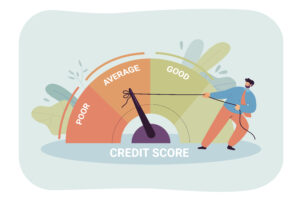Childhood
Adulthood and Student
Family Life
Old Age
Pre-Retirement Stage
Student and Adolescence
Kids and happy Little Investors Reinforcement of money, Make learning about money engineering and piggy bank, Planting the Seeds of Saving and Money affaires for kids and toddelrs, Positive and creative ways for money saving, Power of Allowance
Our Finocracy
0 Comments
Sprouting Sprouts: Heartwarming and Fun Money-Saving Tips for Little Investors (Age 0-5)
Teaching financial literacy to toddlers might sound daunting, but it can be fun, rewarding, and heartwarming. This guide provides creative, funny, and emotional tips for saving money tailored for kids aged 0-5. From engaging games to inspiring stories, these ideas help parents instill positive habits early.
In this Article today i will discuss About:-
1-Sprouting Sprouts: Heartwarming and Fun Money-Saving Tips for Little Investors (Age 0-5)
2-Planting the Seeds of Saving and Money affaires for kids and toddelrs,
3-Power of Allowance Positive and creative ways for money saving
4-Make learning about money engineering and piggy bank,
5-Kids and happy Little Investors Reinforcement of money Organize treasure hunts
Table of Contents
Why Teach Financial Literacy Early?
Early exposure to money concepts builds the foundation for smart financial decisions.
Benefits Include:
- Confidence Boost: Kids learn to manage resources effectively.
- Better Decision-Making: Early lessons help kids differentiate between needs and wants.
- Empowerment: Understanding money fosters independence.
Story Example: Meet Mia, a 5-year-old who started saving for a toy. With her piggy bank and weekly allowance, she learned patience and prioritization.
Planting the Seeds of Saving

Introducing financial habits at an early age is pivotal.
- Make It Fun: Decorate savings jars with kids.
- Involve the Family: Turn grocery shopping into a budgeting lesson.
- Chores for Coins: Give small rewards for age-appropriate tasks.
Example Activity: Use two jars labeled “Spend” and “Save.” Let kids split their allowance, teaching prioritization.
The Power of Allowance
Allowances are tools for teaching ownership over money.
- Start small, linking tasks like picking up toys to earning coins.
- Reinforce lessons with verbal praise, building emotional connections.
Pro Tip: Discuss goals like buying a favorite treat to make savings meaningful.
Piggy Bank Adventures
Transform saving into a delightful experience!
- Choosing Piggy Banks: Let kids pick their design.
- Customization: Encourage creativity—paint, stickers, or themes!
- Earning Trackers: Chart income sources to make growth visible.
Engaging Money Games for Toddlers
Games are an excellent way to introduce money concepts.
- Coin Toss: Teach basic math with a fun toss.
- Pretend Store: Roleplay buying and selling items.
- Needs vs. Wants Bingo: Visualize essentials and luxuries.
These activities seamlessly combine fun with learning.
Treasure Hunts: Making Saving an Adventure

Create adventures to teach financial skills!
- Use maps to guide kids to “savings treasures.”
- Hide small coins or toys as rewards.
- Discuss financial goals after each hunt to build long-term habits.
Heartwarming Stories
Stories captivate young minds while imparting lessons.
- “Sam’s Piggy Bank Adventure”: A tale of perseverance and rewards.
- Family Traditions: Share savings lessons from your childhood.
Comparison Table: Traditional vs. Modern Methods
| Aspect | Traditional Methods | Modern Methods |
| Tools Used | Piggy Banks, Savings Jars | Apps, Digital Wallets for Kids |
| Learning Approach | Storytelling, Family Talks | Gamified Apps, Interactive Videos |
| Accessibility | Requires Parental Oversight | Can Be Independent (Parental Controls Available) |
| Engagement | Physical Games like Coin Toss | Virtual Games and Augmented Reality Tools |
| Teaching Complexity | Basic Lessons on Saving and Spending | Advanced Lessons on Budgeting and Investments |
Building Lifelong Financial Literacy
Reinforce habits with continued support.
- Discuss larger goals as they grow older.
- Set family challenges like saving for a vacation together.
- Lead by example—showcase your savings strategies.
FAQs
What’s the best age to start teaching kids about money?
Start as early as age 3 with simple concepts like coins and saving.
How can I make financial literacy fun?
Use games, interactive piggy banks, and stories to engage kids emotionally.
Is giving allowances a good idea?
Yes! It teaches responsibility and decision-making, but ensure it’s age-appropriate.
How do I teach kids the difference between needs and wants?
Visual aids like charts or games can effectively illustrate these differences.
What are the benefits of treasure hunts for financial lessons?
Treasure hunts encourage goal setting, problem-solving, and the joy of achieving rewards.
Can toddlers really understand saving?
Yes, when broken into simple, engaging activities, toddlers can grasp basic saving concepts.
Conclusion
Teaching toddlers about money is not just about saving; it’s about shaping their future. With engaging activities, emotional reinforcement, and heartwarming stories, parents can ensure their little sprouts grow into financially wise individuals.













Post Comment